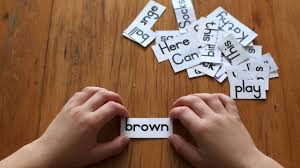Homeschooling Ideas: Resources
and tips for teaching at home
Well you see sometimes, it feels like everything is out of control and the world is spinning a little too fast. Of
course, in between homeschooling my kids and my routine timetable, it becomes very exhausting just trying
to keep up with everything. Well, every time I witness such a warm interest and pure fascination in children’s
eyes as they effectively engage in learning on all the fronts, from paintings with their hands on the table in the
kitchen to interesting practices in the” scholarly atmosphere, “I recall the reasons why we embarked on this
path.

That is why as homeschooling parents we are privileged to be able to give them a learning environment that
they enjoy learning in at their own sweet pace. Quite often it is not straightforward, but that feeling of
responsibility and happiness as we try to give our kids the education they deserve, is priceless. Let me share
some of the most useful resources and concepts as far as homeschooling is concerned, which make our days
much more enjoyable. Seriously, these tips will do you a lot of favors when it comes to homeschooling your
own child/children.
Building Your Homeschool Foundation: Where to Begin
Starting the homeschool journey is a lot like standing at the edge of something great and unknown, isn’t it?
You’re probably asking yourself “Where do I begin?” I remember precisely those feelings, wondering whether
I’ll choose the right homeschool curriculum, putting the schedule together, searching for a way to find a
balance for me and the kids. But the foundation we lay in those first steps is it all. Being perfect isn’t what it’s
about, it’s about making the classroom, the space for our kids to gain knowledge in language arts, and social
studies, and even science and math, all feel natural and supportive, a place where they can learn at their own
pace.
And one of the easiest ways to start is to begin with the rhythm of your family. Let’s say the kitchen table is
your classroom or the dining room table hosts science topics and sensory bins. Free resources, a homeschool
community, and a belief that your journey will unfold, step by step, will provide you with the confidence to
start. It’s your foundation, and each little choice moves you nearer, to the homeschool days you hope to
achieve.
Creating a Flexible Daily Schedule for Busy Moms
Building a rhythm that dances with the chaos of real life, imagine arranging your daily schedule to be flexible.
Being a homeschool mom I understand how day can be so unpredictable— the baby naps longer than
expected, someone spills their snack on the floor, or your older child suddenly can not find the one pencil that
works for them. A flexible schedule allows us to celebrate those quality small unplanned moments and make
it to our goals without being too rigid with a strict plan. This is the ultimate mum’s guide for balancing
homeschooling and everything else.

The point is to discover what works for you and your family! Mornings may be for quiet language arts in the
dining room, and afternoons may be for hands-on activities that build critical thinking. Close the day with joy
by mixing in some free play, some educational games, or even a board game. This means kids will find
themselves ready for new lessons without being stuck in a repetitive routine that is boring for kids. Trust me,
keeping a homeschool planner helps too! It’s not every minute is pre-scheduled, but it helps prioritize and
pivot as life throws surprises.
Here are a few ideas to add structure but keep it flexible:
1. Morning time for focused lessons or subjects requiring deep concentration.
2.Midday breaks for free resources or online resources that offer a mental breather.
3.Afternoon sessions for creative activities, like field trips or sensory bins for younger children.
This approach balances structure with spontaneity, helping you
Must-Have Resources for Every Home schooler
It feels surprising to hear that homeschooling can feel like a leap; having the right resources can make all the
difference. Following are three unique, essential tools that have indeed made a huge difference to our
homeschool journey.
Interactive Learning Platforms with Personalized Progress Tracking
It isn’t only looking for free resources online—you can use platforms like Khan Academy or IXL that allow you
to track progress in a customizable way. These tools allow each child to go at his or her own pace and give
parents detailed insights. My daughter was behind in language arts but when she learned that she could focus
on areas she needed extra help without rushing, that’s when she did the best. Every platform adapts to each
child’s grade level and provides a balance between independence and hand holding so you can ‘see your child
grow’ without freaking them out. This feature is a game changer for busy homeschooling parents.
“Exploration Kits” for Building Real-World Skills
Instead of typical educational games, ‘exploration kits’ that are geared towards real, practical skills are what
you want to seek out. For example, KiwiCo’s boxes teach everything from art to engineering. Imagine your
child assembling a hydraulic claw and then understanding the science behind it. One month we tried a
culinary-themed kit, which transformed our kitchen table into hands-on learning on measurement and
cultural history. Not only do these kits teach new things, but they also spur a love of learning by making each
and every everyday skill exciting and doable — my kids now beg for ‘kit day’ each week!

Local Co-Ops and Pop-Up “Homeschool Classes”
Homeschool communities are great, but I’ve discovered that local co-ops or pop up classes are an excellent
way to introduce kids to new social and academic experiences. Many co-ops offer special sessions such as
environmental science at a park nearby or a ‘book club’ where younger and older children read, discuss, and
debate. They’ll both be educational but it’s also community support for children the way they’d get it in a
traditional school. Plus, former teachers or fellow homeschool moms with years of homeschooling wisdom
offer us parents insights. But it’s an awesome way to add to the feeling of a richer, fuller homeschool
experience outside your own four walls.
The Best Free Tools for Homeschooling on a Budget
If you’re homeschooling on a budget, everyone always feels like they are searching for that hidden treasure
chest of free resources. These tools have been total lifesavers for me, because first of all, they’re free, but also
because they come packed with value. So here are my favorite tools to make our homeschool days richer
without spending a dime.
All-in-One Free Learning Hubs for Every Subject
Homeschooling moms dream of all in one platforms such as Khan Academy for a complete and structured
learning experience. These hubs have something for every subject, for every grade level, from language arts to
social studies, and are ideal as daily lessons. To see my kids pull in new things with a spirit of independence —
knowing there are good resources to use without putting in a penny, that’s incredible.
Creative YouTube Channels for Interactive Lessons
There is a ton of homeschool friendly content on YouTube, from science experiments to virtual field trips.
CrashCourse and SciShow utilizes channels to break complex topics into something simpler that can be easily
understood by younger kids as well as high schoolers. My favorite thing is how simple it is to search for
specific subjects or grade levels, so I can get exactly what we need for that day’s lesson. Second, screen time in
and of itself is a favorite activity anyway, so it’s a great way to get some learning in without any complaints!
Public Library’s Online Resources and eBooks
The learning has become limitless, free and even entertaining. Our local library has transformed into our
homeschooling sanctuary with free eBooks, audiobooks, sometimes even educational games. Free online
resources like historical databases to kids’ book clubs, abound in many libraries. Think of it like having our own
stockpile of valued resources and educational treasures, all sitting on our own shelf, ready to be taken down
and either consumed or picked up when the need or desire arises. After a busy, hands on day my children and
I usually love to finish our homeschool day with some quiet reading time.
Interactive Educational Apps for Skill Building

Apps like Duolingo for languages and even Prodigy for math are unbeatable for free play that’s also
educational. It helps build necessary skills and keeps your child entertained. These apps are used for doing
everything from building great fine motor skills to critical thinking. And because they’re designed to be fun, it’s
a win-win: The kids think they’re playing a game, and I know they’re learning something useful. These are
wonderful ways to make learning work in every crevice of our lives!
Hands-On Activities That Make Learning Fun
Hands-on activities never fail to bring learning to life. I think there’s magic in seeing the little kids’ faces light up
as they bravely work through new skills with their bright and colorful, fun and interactive, creative learning to
play set. As a homeschool mom, I’ve discovered these learning activities turn our kitchen table or living room
into a busy learning environment where every lesson becomes a memory. Engaging kids in learning using a
hands-on approach (little hands and curious minds) retains much more for them than sitting at a desk.
Hands-on activities are a great way to get kids learning without relying on screen time for busy moms. Fine
motor skills, critical thinking, and the love of learning can be reinforced through activities like sensory bins,
science experiments, or even simply tasks around the house. Versatile, they can be easily worked into any
daily schedule, keeping homeschool learning time lively and enjoyable, even on the busiest days.
A few favorites that require minimal setup include:
1.Sensory bins for building fine motor
2 .Homemade science experiments to spark curiosity
3. Educational games like board games for family fun Each of these activities creates lasting
moments of joy and growth, where the entire family can join in. At the end of the day, it’s
these simple, hands-on experiences that make homeschooling a truly special journey.
How to Personalize Your Homeschool Curriculum
Teaching your child at home is fun because there is a way to make the learning theme to suit the child’s
interest, academic ability, and goals. It is more like knowing boundaries of what a traditional school can
provide and innovatively developing an alternative learning system that harmonizes with the family’s day-to-
day timetable, ethics and goals. Regardless of whether your child loves social studies, language arts, or
science, having an individual learning approach enables you to enhance that curiosity your child is already
displaying and let them have fun while at it.
Think of it as a beautiful blend of flexibility and intention. As an example, if you have little children, they may
learn better with the help of tangible objects or they require a combination of play and learning, and all those
games turn into homeschool curriculum. Perhaps, older children would be more comfortable learning with
foreign language resources or any type of critical thinking activities that would cater to their growing capacity.
The best thing about it is that no child is locked into an archaic set of activities that don’t change with the
child’s interests.

In this way, you will be able to include ‘free’ resources, field trips, and even YouTube videos into your
homeschooling, allowing homeschooling to happen naturally and meaningfully. In a nutshell, homeschooling
is a way to bring something unique and enjoyable into every homeschool day.
Tips for Balancing Screen Time with Hands-On Learning
Balancing between time spent on screens versus doing things with our own hands and with our children is a
little like a new dance, the dance where you learn what kind of dance is best for your family. If every child runs
to the screen eager for virtual life, but also fully wanting real life, then there at least exists the possibility that
we are constructing these worlds deliberately. Here are some interesting strategies on how to make the most
of both without neglecting their love to learn.
Screen Time as a Springboard for Real Adventures
Consider screen time as the launchpad to real life adventures not just for digital learning. When your kids have
finished a lesson or educational video about geography, turn your kitchen table into a “passport station” and
require the kids to make stamps for each country and travel (prepare a meal from) that country. Screen time
leads to curiosity, while hands-on activities take kids deeper into the journey.
Crafting a Screen-Free Zone That Feels Magical
Create an area where there is no screen, whether that be a little corner in your home or even a screened
tented nook—filled with pillows! Maybe I should call it the “Discovery Den” where there are no screens – only
creativity and just play. Sensory bins, educational games and resources for making things to play with their
hands are all fill it with. See how your kids are drawn to this space for a break — and developing fine motor
skills and critical thinking, all screen free.
The “Screen and Scene” Method: Pairing Learning with Scenery
Take screen time as part of an experience. For instance, have “movie night,” watch a science video outside
under the stars or after an art lesson you make an art gallery in the living room. Using this “Screen and Scene”
method engulfs them in learning as a remarkable experience, rather than as something ordinary to do.
A Weekly “Screen Swap” Challenge

To shake things up, give it a try by introducing a weekly “Screen Swap” where kids with the screen time replace
one day of screens with a hands-on project relating to their interests. They get to decide what they want to
build, or write a story, paint a mural or plant a garden. This adaptable system allows kids to select their hands
on education and stay in line while homeschooling.
Have Screen-Free Rewards for Little Wins
For every hour or task completed on-screen, create a “reward” in the form of a small, screen-free adventure.
For example after a week of language arts lessons on the tablet, go on a family field trip about that same
subject. It could be everything from visiting a local library to a DIY treasure hunt. It turns learning into a series
of balanced “little wins,” keeping kids excited about the learning.
Creating a Homeschool Community: Support and
Connection
As homeschool moms sometimes we are carrying all the education for our children on ourselves. And that’s
why creating a homeschool community can be a lifesaver. Could you picture a place where we moms could
swap ideas, share challenges, celebrate even the little victories? It’s not about sharing resources, but about
surrounding ourselves with people who get what it’s like to homeschool and who are willing to support us
through the ups and downs of the year.

Whether it’s a park, virtual group or even a few fellows chatting around the kitchen table, we have a unique
space to connect over our children’s everyday lessons, fears and wins in having a homeschool community.
